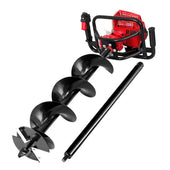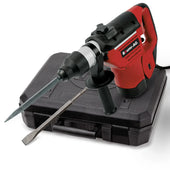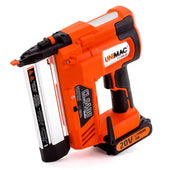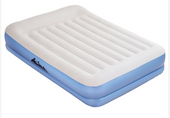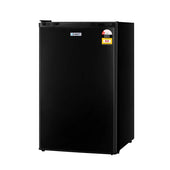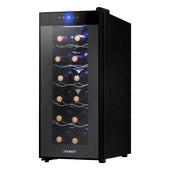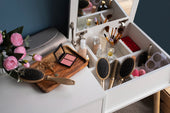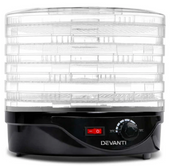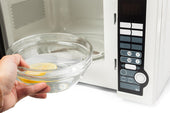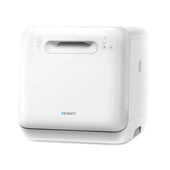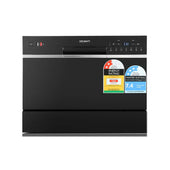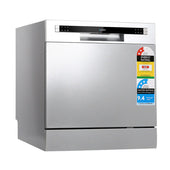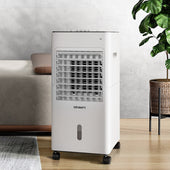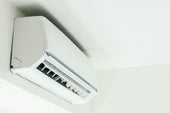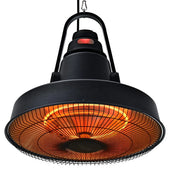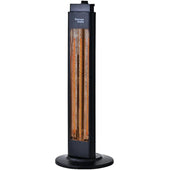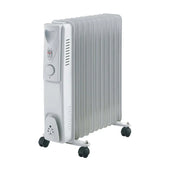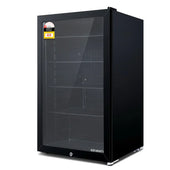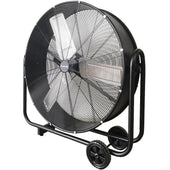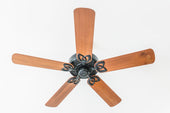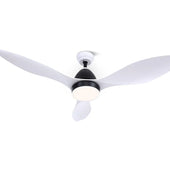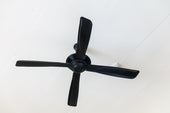Introduction to Vanity Units: Why They're Essential
Vanity units are a cornerstone of modern bathroom design, combining functionality with style. They seamlessly integrate storage solutions with basin fixtures, helping maximise space in both compact and larger bathrooms. Essential for maintaining a clutter-free environment, these units keep toiletries, cleaning supplies, and other essentials organised and easily accessible.
A well-chosen vanity unit enhances a bathroom's aesthetic appeal while complementing its overall design. By providing concealed storage, it contributes to a sleek, minimalist appearance. Furthermore, vanity units come in various sizes, finishes, and styles, catering to diverse preferences and space constraints. Their practicality and design versatility make them indispensable in contemporary bathrooms.
How to Choose the Perfect Style for Your Bathroom
Selecting the ideal vanity unit style involves harmonising aesthetics with functionality. Consider the existing décor and colour scheme of the bathroom, especially During Days when natural light highlights design details. Determine whether a modern, minimalist look with clean lines or a more traditional, ornate design matches the space. Factor in the type of materials, such as wood for a rustic charm or glass and metal for a contemporary flair. Evaluate the dimensions of the bathroom to decide between freestanding or wall-mounted units. Pay attention to storage needs, opting for drawers or cabinets based on organisational preferences. Coordinating hardware, such as handles and taps, ensures a cohesive appearance.
Accounting for Size and Space Requirements
When selecting a vanity unit, it is essential to measure the available space accurately. The unit must fit comfortably without overpowering the room or impeding movement. Key considerations include the depth and width of the unit, ensuring accessibility in tight spaces. Wall-mounted designs are ideal for compact bathrooms, while freestanding options suit larger areas.
It is equally important to evaluate the height of the unit for ease of use. Ensure proper clearance for opening drawers or cupboard doors. Transitional spaces, like areas near doors, require attention to avoid obstruction. Considering plumbing placement simplifies installation and prevents costly modifications.
Material Matters: Types of Vanity Unit Finishes
Choosing the right finish for a vanity unit impacts its aesthetics, durability, and compatibility with the bathroom’s overall design. Finishes range from matt to gloss, timber to textured, each offering a unique appeal.
- Gloss Finish: Creates a polished and reflective surface, ideal for modern bathrooms. It brightens spaces by enhancing light dispersion but requires regular maintenance to avoid fingerprints and smudges.
- Matt Finish: This understated option offers a smooth, non-reflective appearance, excellent for sleek, minimalist designs. It resists streaks and imperfections better than gloss.
- Timber Finish: Warm and organic, wooden tones add a natural element to bathrooms. Popular choices include oak, walnut, and reclaimed finishes, often protected by waterproof treatments.
- Textured Finish: Provides tactile depth and visual interest, mimicking stone, concrete, or unique patterns to establish rustic or industrial appeal.
Considering the finish alongside the bathroom's style ensures cohesion and durability in various environments.
Sink Types: Which One Complements Your Vanity Unit?
Choosing the right sink type is pivotal to aligning form and functionality with a vanity unit. The market offers a variety of options, each suited to specific styles and needs.
- Inset Sinks: Installed flush into the countertop, they provide a clean, integrated look, ideal for modern bathrooms.
- Countertop Sinks: Also called vessel sinks, they sit on top of the vanity and are perfect for achieving a luxurious, statement aesthetic.
- Undermount Sinks: Positioned below the countertop, these sinks create a seamless appearance, making cleaning effortless.
- Wall-Mounted Sinks: Space-saving and minimalist, these are perfect for small bathrooms or cloakrooms with wall-hung vanities.
- Pedestal Sinks: Often used with traditional vanities, their classic appeal suits older or vintage décors.
Select a type that balances design with practicality, considering space availability and daily use requirements.
Storage Features: Finding the Ideal Configuration
Selecting the right storage configuration ensures your vanity unit meets both aesthetic and practical needs. Assess the available space and decide between drawers, shelves, or a combination. Drawer systems provide organised compartments for smaller items, while open shelving offers easy access to frequently used essentials. Closed cabinets are perfect for concealing bulkier items like towels or cleaning supplies.
Consider adjustable shelving to customise storage layouts. Soft-close mechanisms add a touch of sophistication and reduce wear over time. For compact bathrooms, wall-mounted units create ample storage without consuming floor space. Multi-functional designs, such as mirrored cabinets or integrated laundry hampers, enhance utility. Thoughtfully planned storage simplifies daily routines while maintaining a tidy environment.
Plumbing Considerations for Easy Installation
Proper planning is essential when it comes to plumbing to ensure a smooth vanity unit installation. Begin by assessing the current plumbing layout. Verify whether the existing water supply and drainage lines are in suitable positions for the new unit’s design. If modifications are necessary, consider consulting a professional plumber to avoid potential complications.
Ensure adequate clearance exists behind the vanity to accommodate pipe connections without strain. Wall-mounted units, for example, may require additional adjustments compared to floor-standing designs. Look for pre-cut holes or removable back panels on the vanity unit to ease installation.
Lastly, check compatibility between the unit and your chosen basin fittings, such as taps and waste systems.
Matching Your Vanity Unit with Bathroom Décor
When selecting a vanity unit, it is essential to consider the overall aesthetics of the bathroom. Begin by analysing the existing colour palette. Neutral finishes like white, grey, or beige blend seamlessly with contemporary designs, while darker tones or wood finishes complement traditional styles. Pay attention to materials; stone or marble tops enhance modern luxury, whereas natural wood evokes a rustic charm.
Texture also plays a critical role. Glossy surfaces align well with minimalist or high-tech décors, whereas matte finishes create a more understated appeal. Examine existing fixtures, such as taps and mirrors, to ensure a cohesive look; matching styles unify the space effortlessly.
Tips for Maximising Functionality and Utility
To ensure a vanity unit serves practical and aesthetic purposes, consider the following strategies:
- Evaluate Storage Needs: Assess the amount and type of items to be stored. Opt for a unit with compartments or drawers appropriate for toiletries, towels, and personal care products.
- Choose Space-Saving Designs: For smaller bathrooms, wall-mounted units or corner vanities maximise space while providing essential storage and functionality.
- Prioritise Accessibility: Select units with soft-close mechanisms or pull-out drawers for ease of use. Adjustable shelves can also enhance accessibility.
- Focus on Material Durability: High-moisture areas like bathrooms require units crafted from water-resistant materials like moisture-resistant MDF or treated hardwood.
- Incorporate Integrated Features: Look for units with built-in lighting, mirrors, or charging ports for added convenience and utility.
- Coordinate with the Layout: Size and placement should complement the overall bathroom layout to avoid overcrowding and enhance flow.
Maintenance and Longevity: Caring for Your Vanity Unit
To maximise the lifespan of a vanity unit, regular maintenance is essential. Begin by cleaning the surface frequently with a non-abrasive and pH-neutral cleanser to prevent scratches and discolouration. Water damage can be avoided by wiping spills promptly and using waterproof sealants for wooden units.
For units with drawers or hinges, inspect the hardware periodically to ensure smooth operation and tighten loose screws. Avoid placing heavy items on the unit’s surface as excess weight could strain its structure. Installing the unit away from direct sunlight preserves its finish and prevents fading, particularly for painted surfaces.
Where to Shop: Best Places to Find Quality Vanity Units
When searching for high-quality vanity units, it is essential to choose reputable retailers that offer both style and durability. Look for options in the following places:
- Specialist Bathroom Showrooms: These retailers often carry premium brands and provide tailored advice, helping customers match their vanity unit to their bathroom style.
- Online Retailers: Many e-commerce platforms, such as Victorian Plumbing and Wayfair, feature extensive catalogues with filters for size, material, and price range.
- Home Improvement Stores: Chains like B&Q and Wickes stock diverse designs suitable for all budgets, with the added convenience of physical stores to evaluate materials.
- Independent Furniture Makers: Bespoke workshops can craft custom designs, ideal for homeowners seeking unique, handcrafted options.
Exploring these options ensures access to both variety and quality.
Budgeting: Balancing Cost and Quality
When purchasing a vanity unit, buyers must carefully weigh cost considerations against quality to achieve the best value. A higher initial investment often translates to durability and superior craftsmanship, whereas budget-friendly options may lack longevity or finer details.
Tips for Budgeting Smartly:
- Set a Clear Budget: Determine the maximum amount available and prioritise based on the bathroom’s needs.
- Research Across Price Ranges: Compare mid-range and premium brands to understand value differences.
- Choose Durable Materials: Opt for quality materials like solid wood or engineered stone for long-term savings.
- Factor in Installation Costs: Include installation expenses in planning, especially for wall-mounted units or plumbing adjustments.
Balancing affordability with quality ensures a stylish yet practical vanity unit investment.





